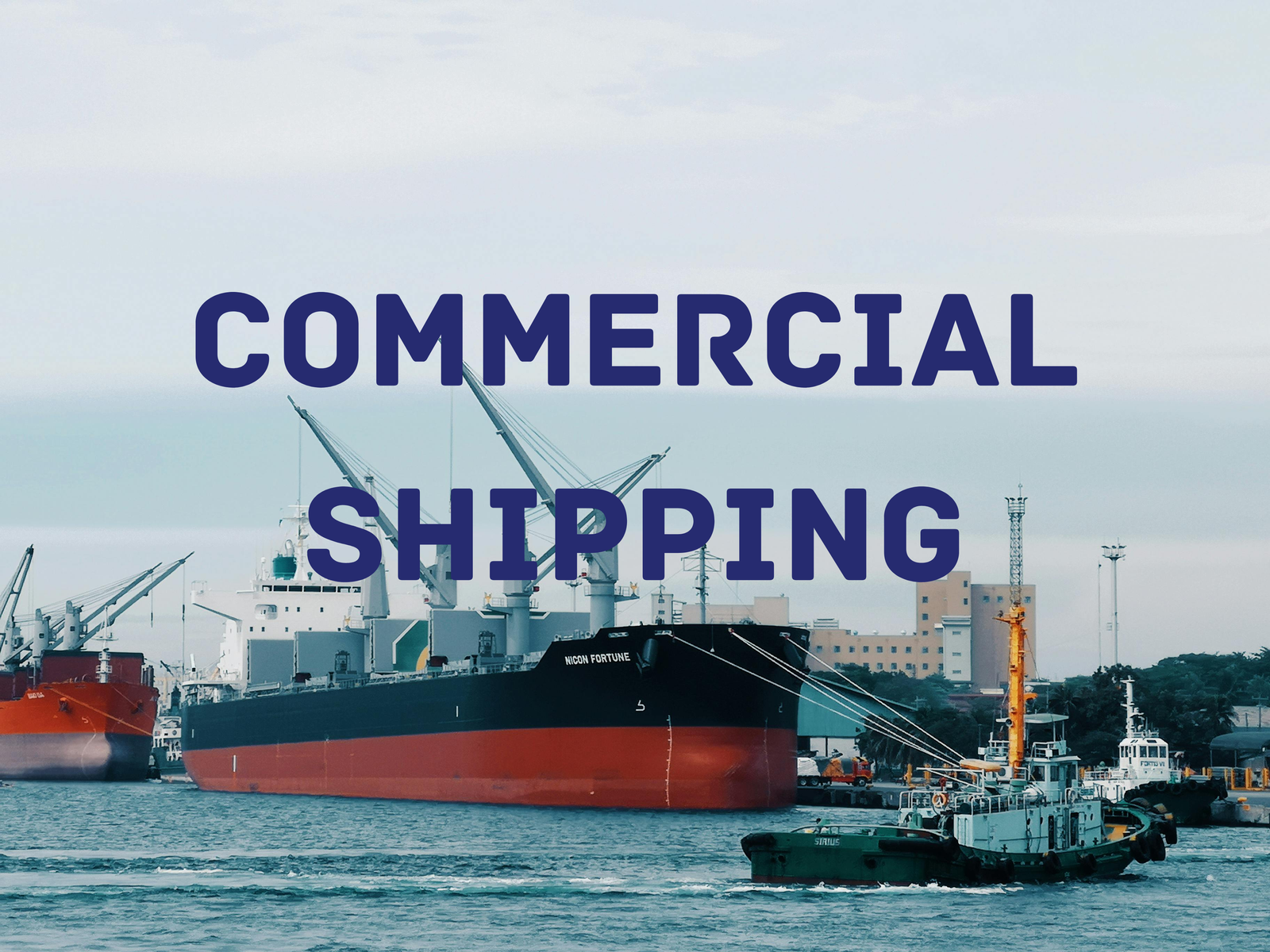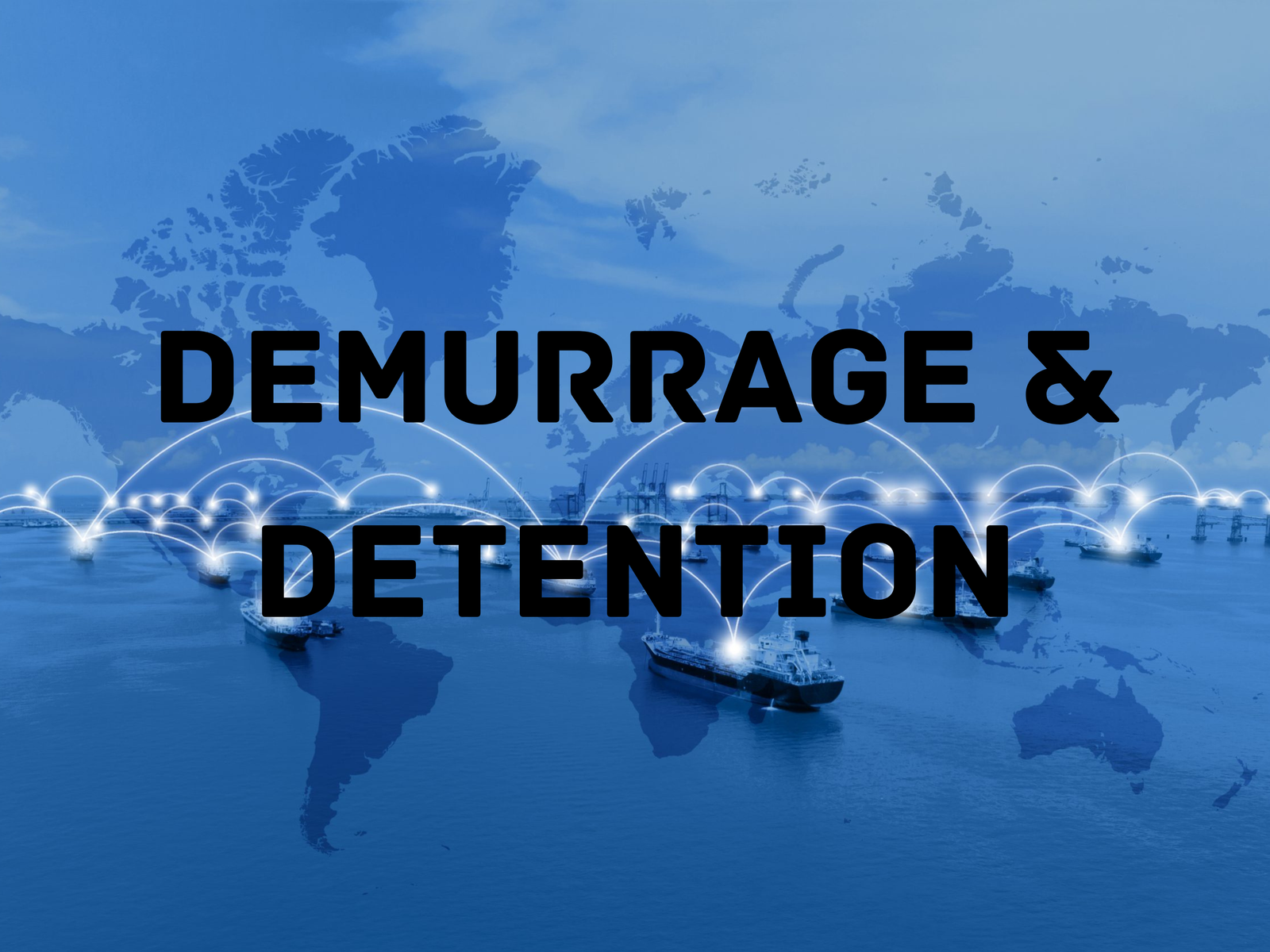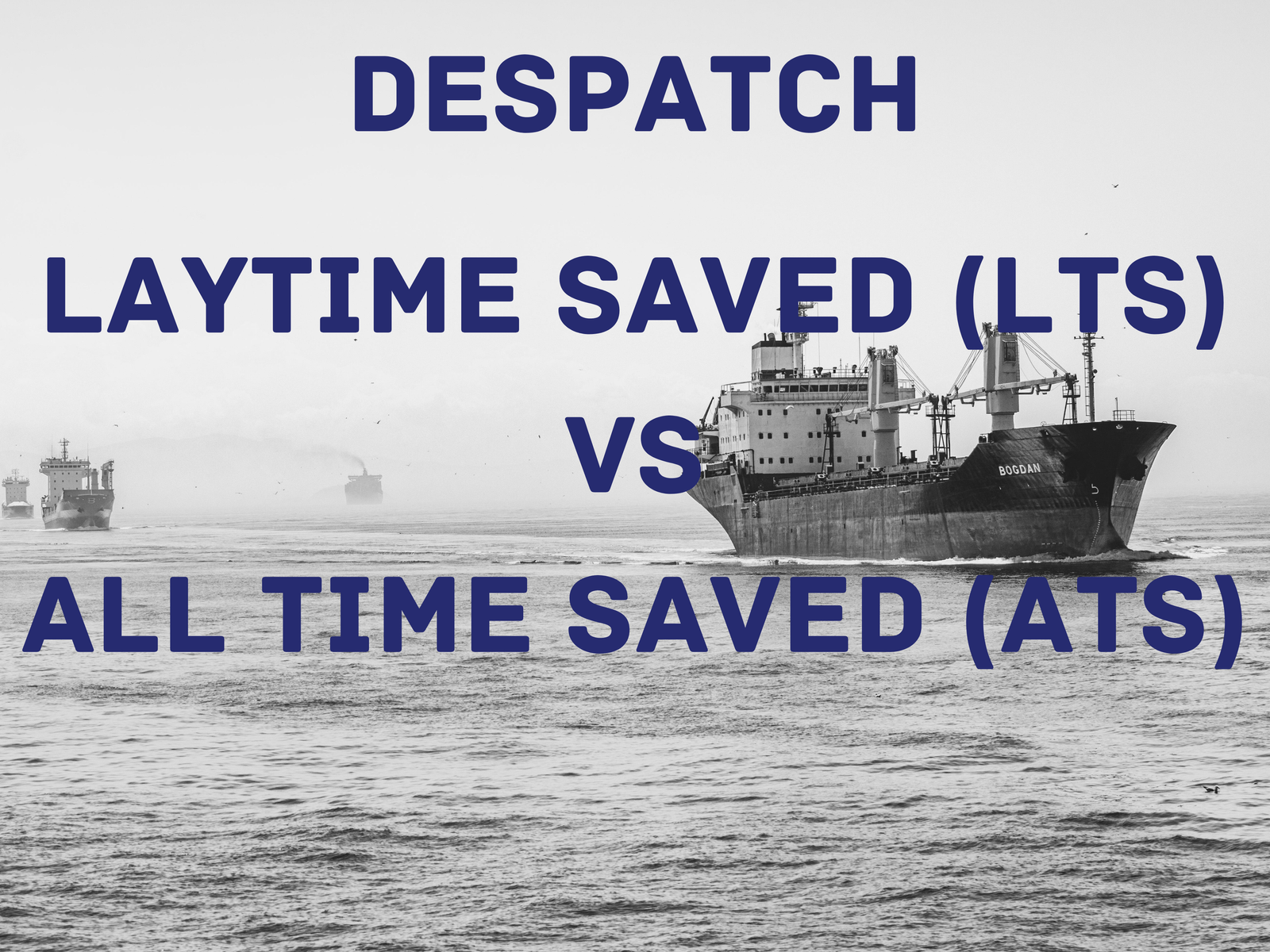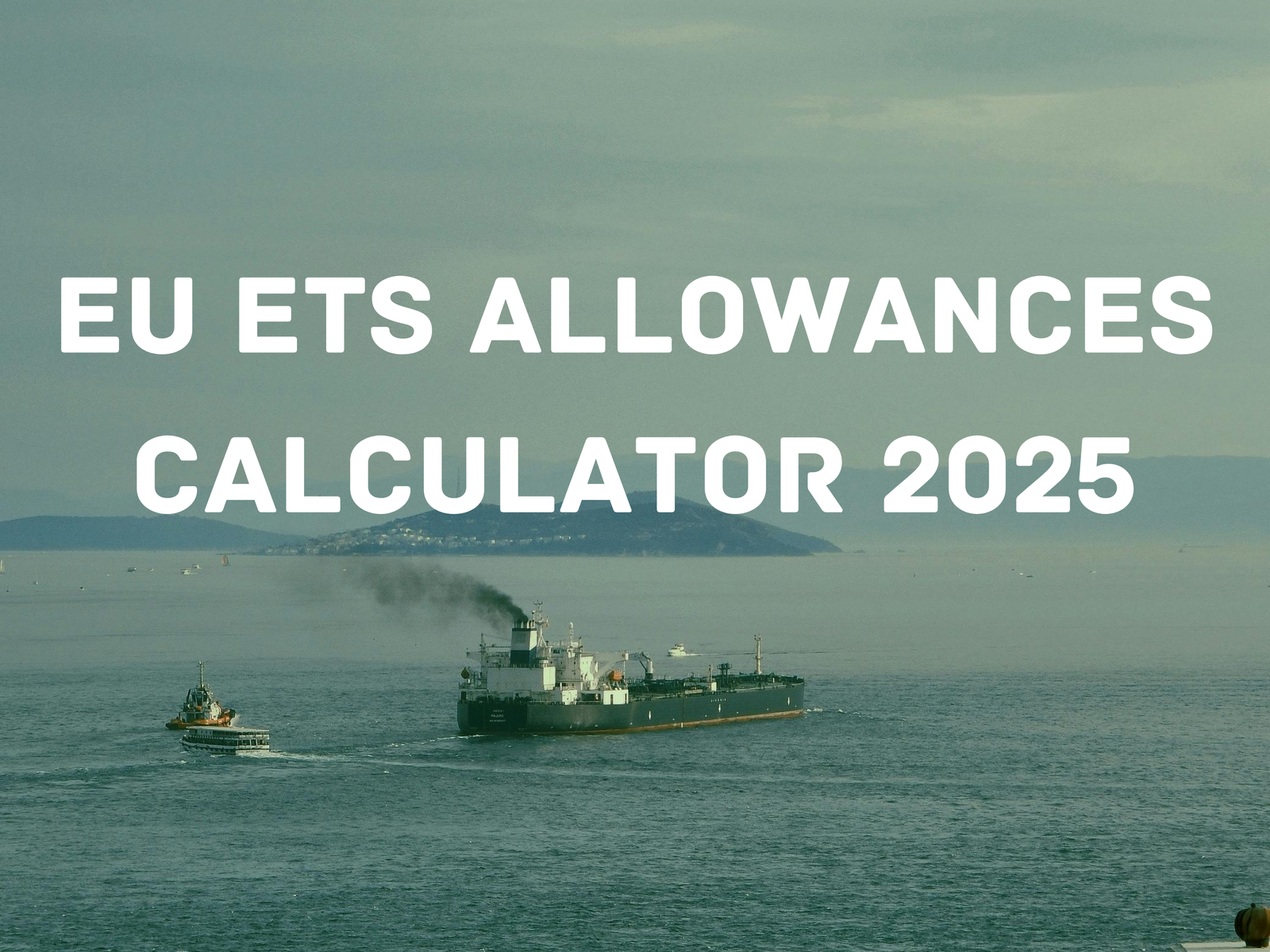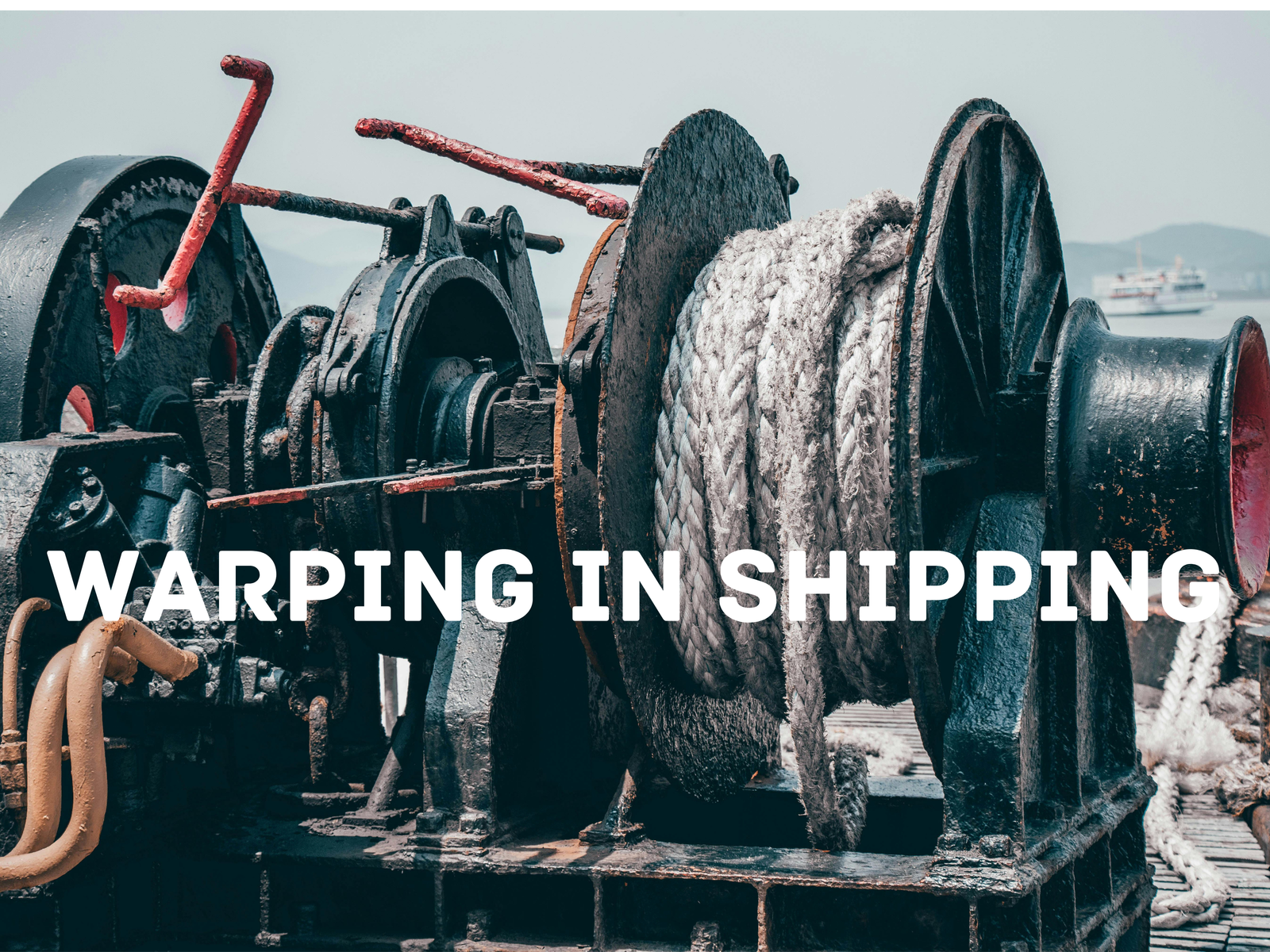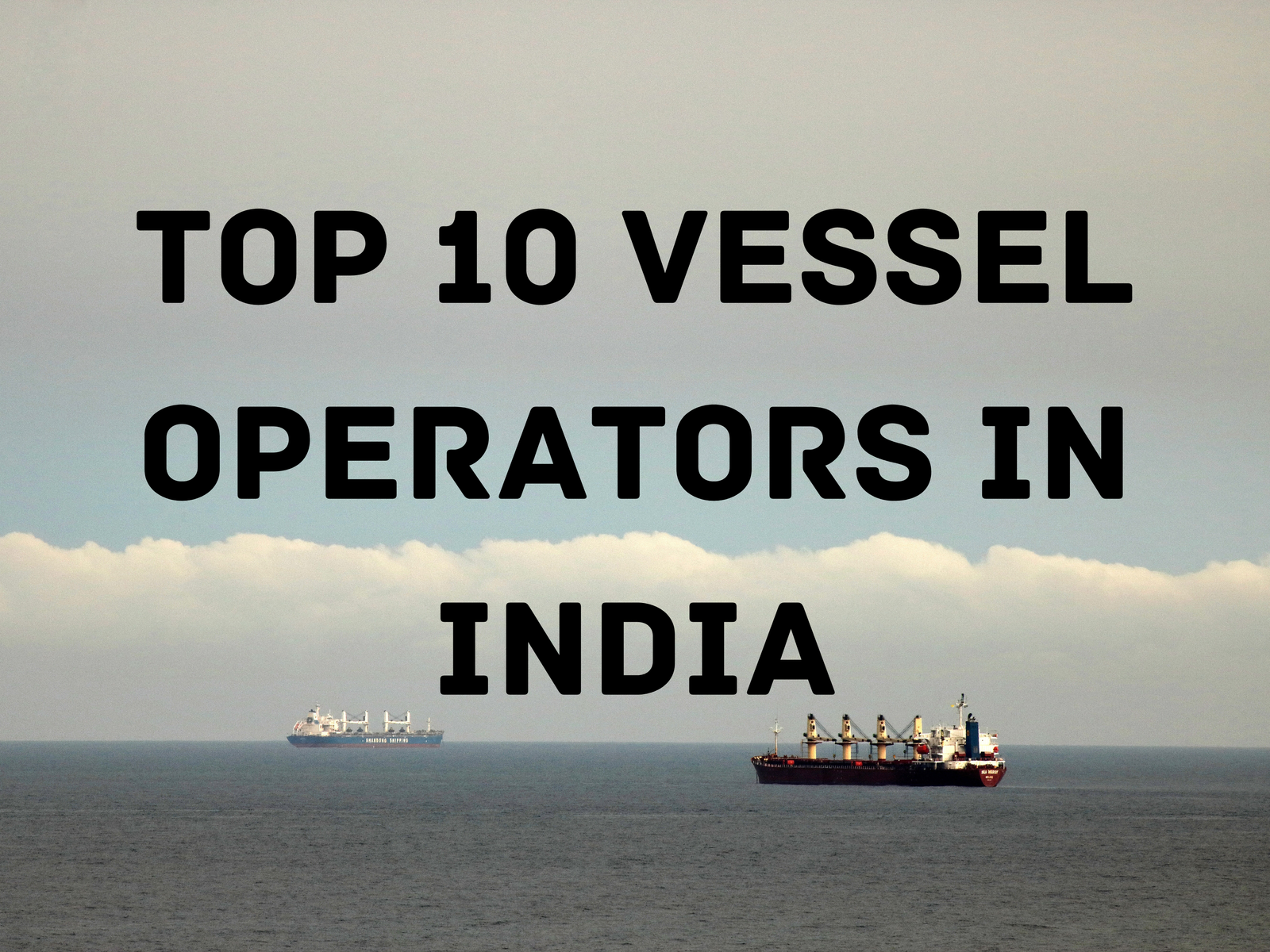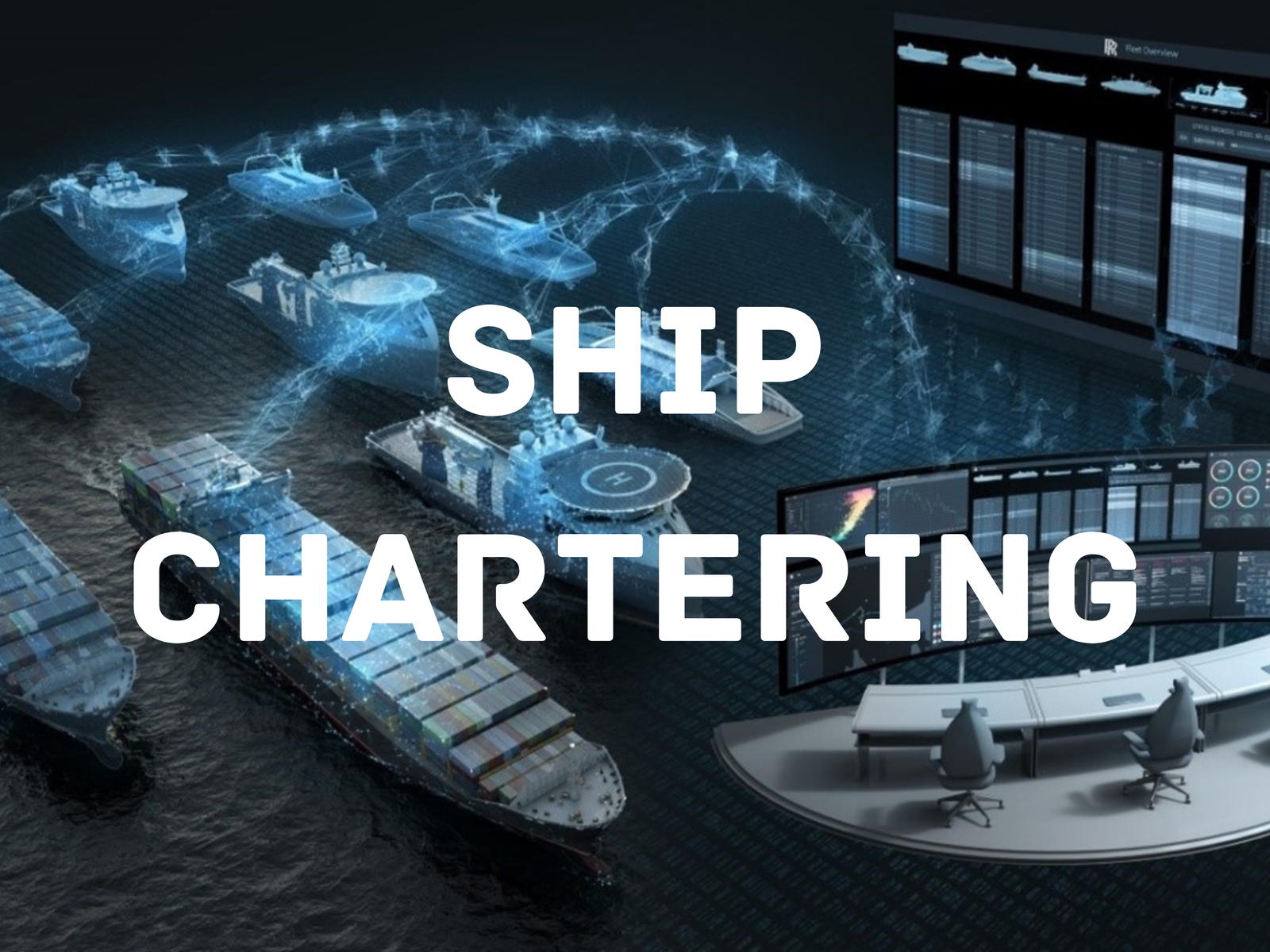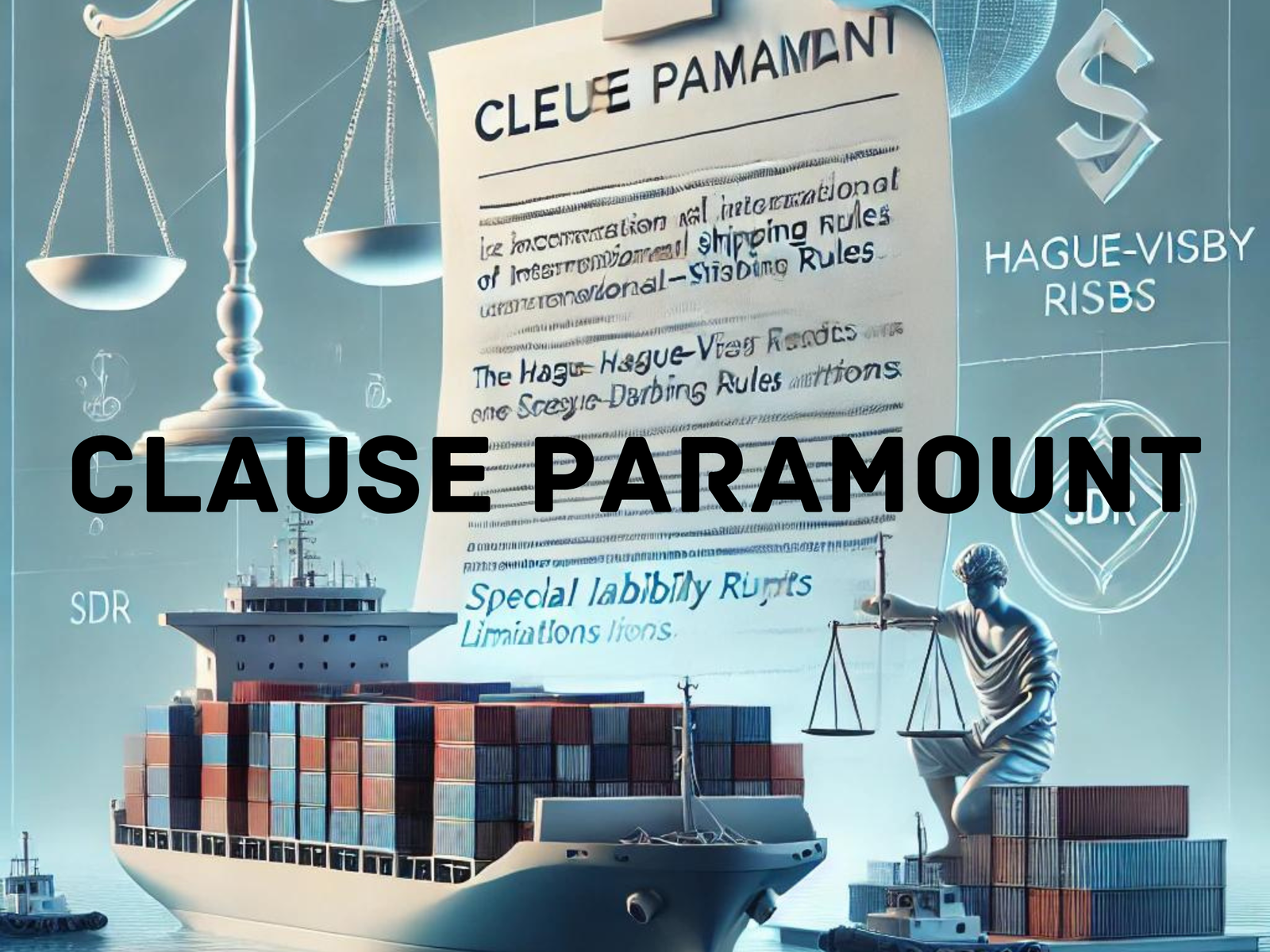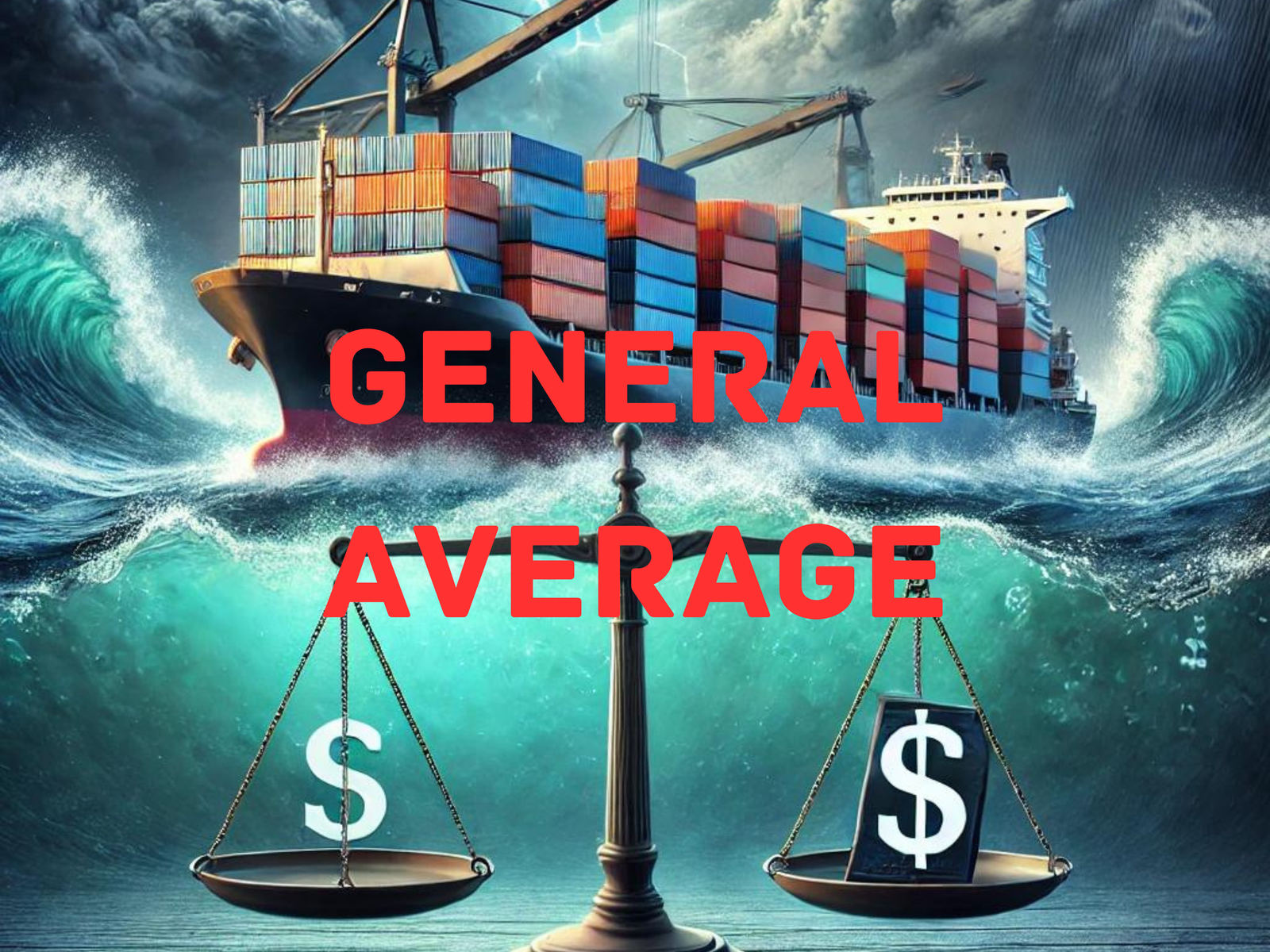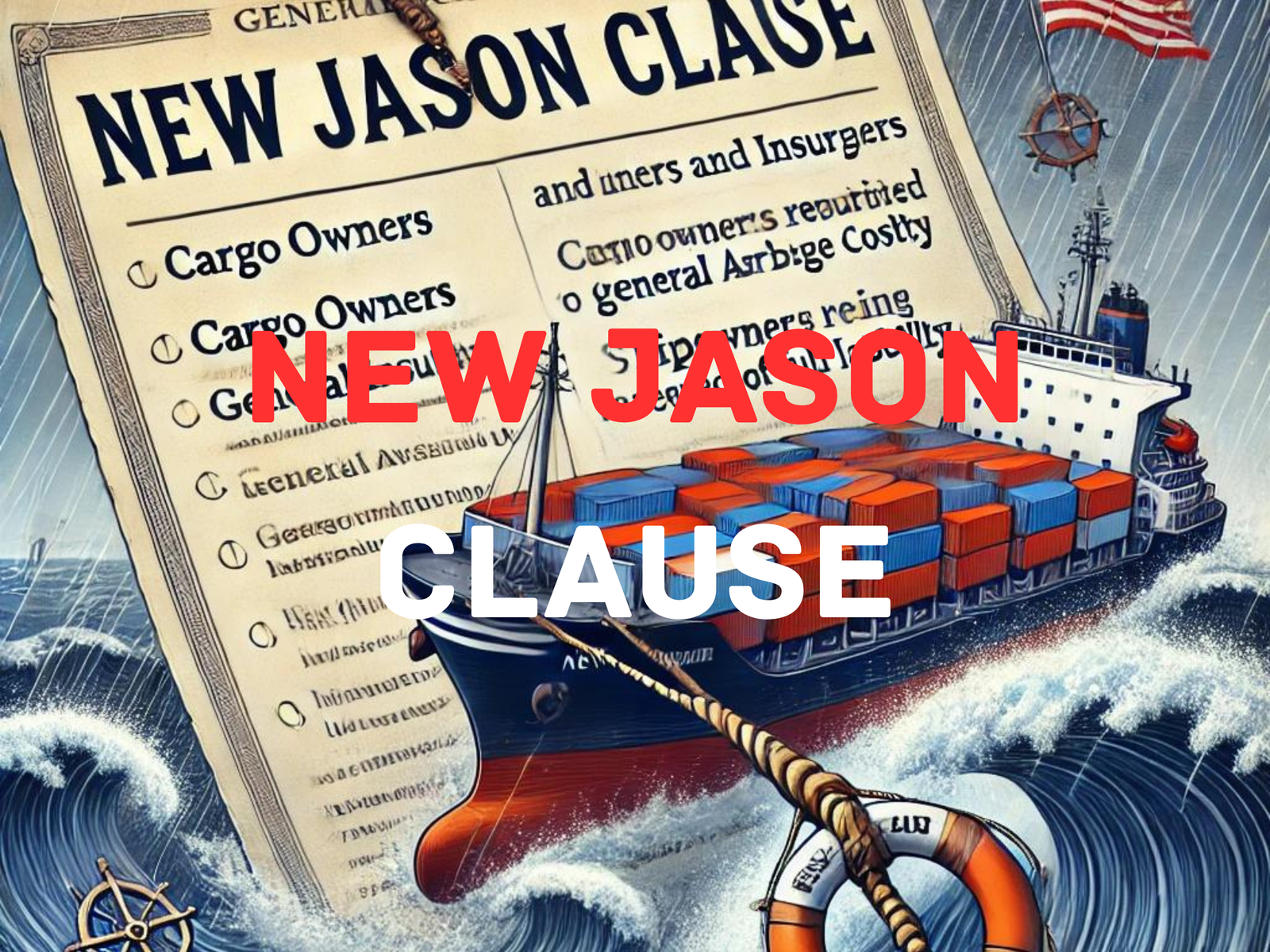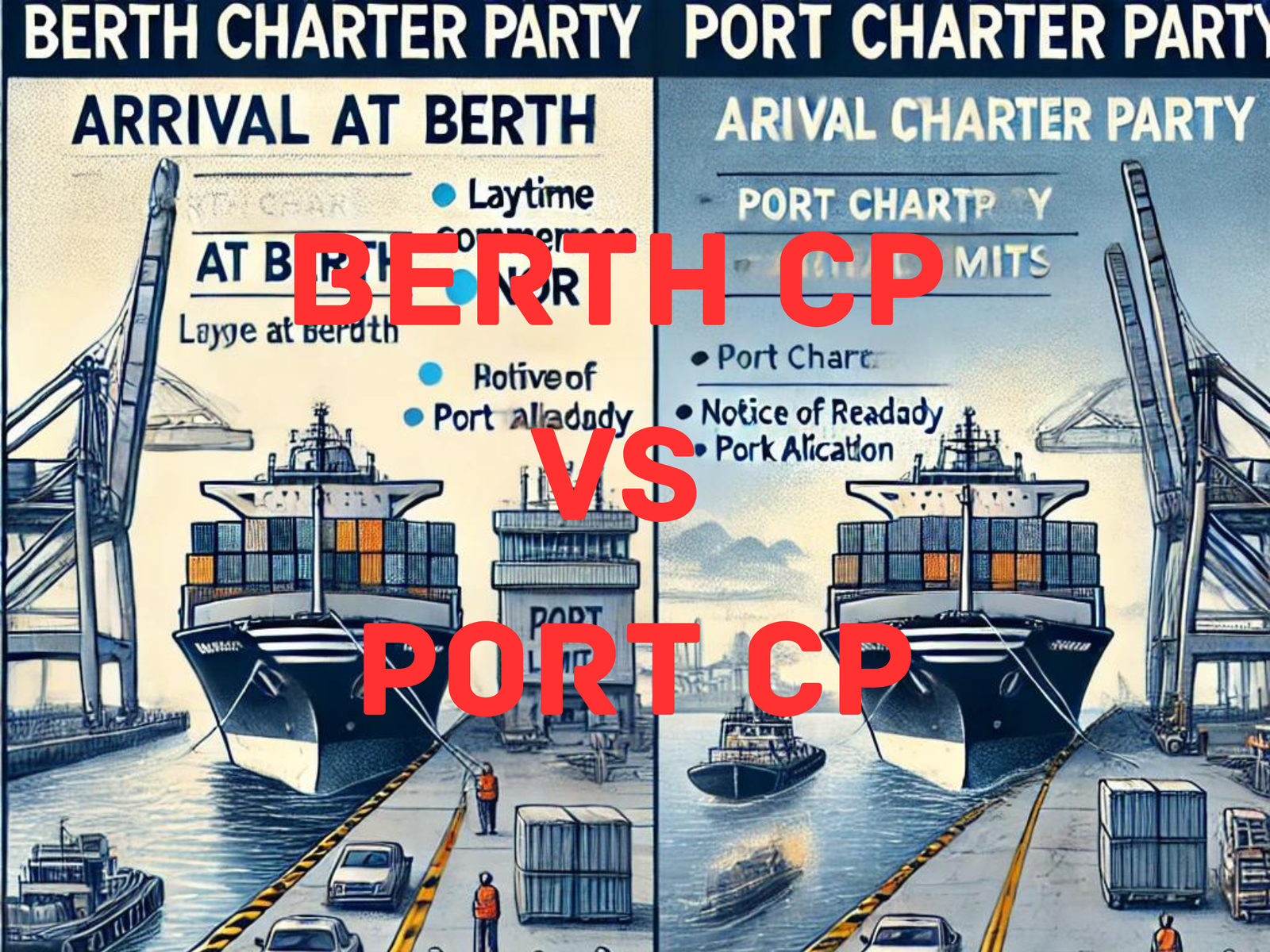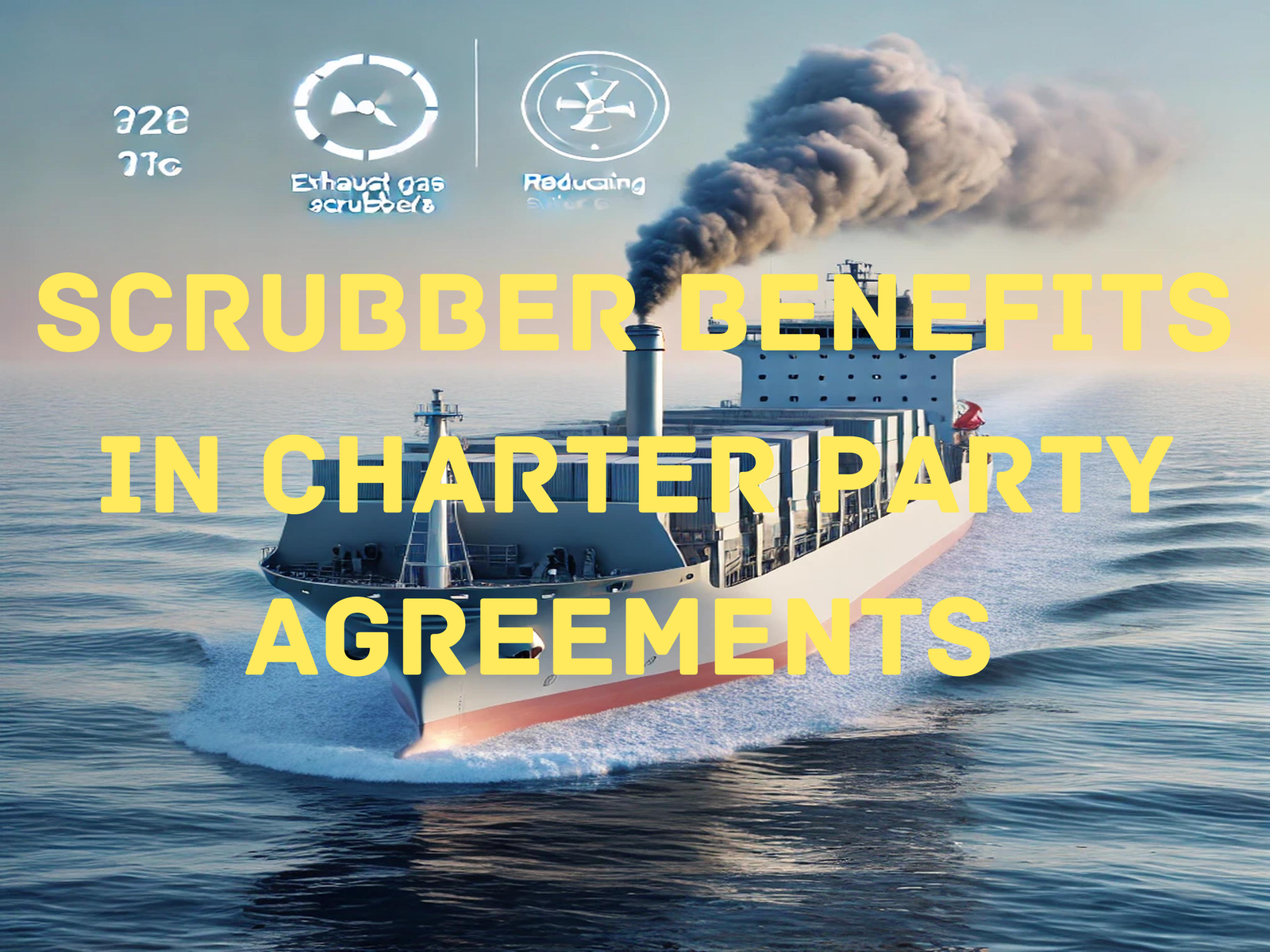In the competitive world of shipping, time and communication are the twin anchors of success. Among the key documents that ensure smooth operations is the Notice of Readiness (NOR). This essential declaration is not just paperwork; it’s a linchpin in the efficient management of cargo operations. Whether you’re a shipowner, charterer, or a cargo operator, understanding the Notice of Readiness (NOR’s) purpose and process is crucial for seamless maritime logistics. Let’s dive into it more.
What is a Notice of Readiness (NOR)?
A Notice of Readiness (NOR) is a formal statement issued by the ship’s master (or an authorized agent) to confirm that the vessel is ready to begin operations, such as loading or discharging cargo. It’s a crucial milestone, marking the start of Laytime, the agreed-upon period for completing those operations without incurring penalties.
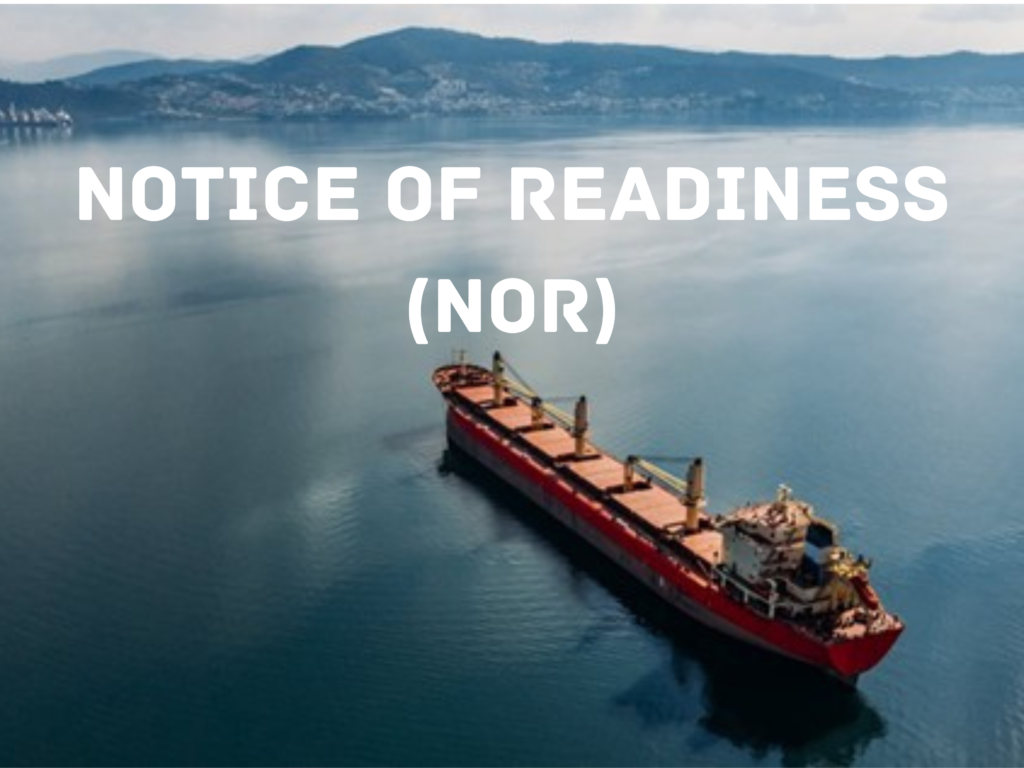
Essential Components of a NOR
To ensure the validity, a NOR must meet these key criteria:
- Vessel Preparedness: The ship must be fully ready for operations. This includes having clean cargo holds, functional equipment, and completed inspections.
- Arrival at the Specific Location: The vessel must be at the agreed location, whether it’s a berth, anchorage, or port, as specified in the charter party or contract.
- Compliance with Terms: The Notice of Readiness must align with the terms and conditions outlined in the shipping agreement.
- Completion of Formalities: Necessary port and customs clearances must be secured before issuing the NOR.
How Notice of Readiness (NOR) Impacts Laytime Calculation
Laytime begins once a valid NOR has been issued and accepted by the charterer or their representative. If laytime is exceeded, demurrage charges may apply, making the NOR a key tool for managing operational timelines and costs.
Example Scenario of Tendering valid NOR and beginning of Laytimme
- A charter party agreement specifies that laytime starts 12 hours after tendering of NOR, WWWW.
- The vessel arrives at Port Richards Bay anchorage and tenders the NOR at 0900 on 12th Jan 2025 as the berth was occupied and due to the clause WWWW in the charter party agreement the vessel may tender NOR at the customary waiting area of the port, which is in most cases the anchorage of the port.
- The charterer’s representative acknowledges the Notice of Readiness (NOR) at the same time. Laytime begins 12 hours after at 2100 on 12th Jan 2025 as per the terms of the charter party.
Tips for Effective Issuance and Management of Notice of Readiness (NOR)
- Be Accurate and Clear: Ensure the Notice of Readiness (NOR) includes essential details such as the vessel’s name, location, port name, cargo details, and operational readiness.
- Issue Promptly: Delays in issuing the NOR can lead to disputes or additional costs, Submit the document as soon as readiness criteria are met.
- Maintain Records: Keep a detailed log of when, where, and how many Notice of Readiness (NOR) are issued, received, and accepted to avoid misunderstandings.
- Know Local Rules: Some ports have unique requirements for accepting Notice of Readiness (NOR). Familiarize yourself with these specifics to avoid complications.
Notice of Readiness (NOR) format
The format used by different companies, vessels, and masters may differ, however, the general format with required information that a Notice of Readiness (NOR) should contain looks like this
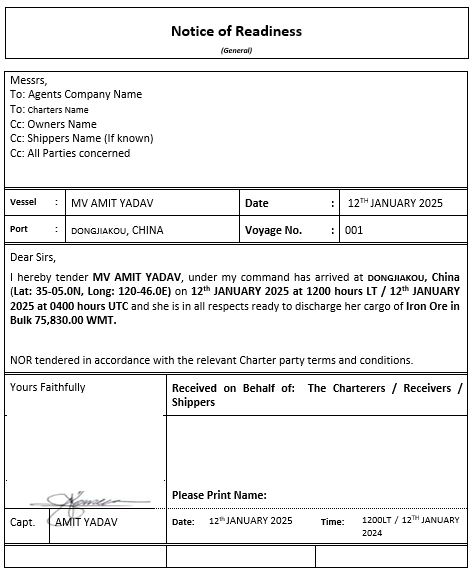
Common Notice of Readiness (NOR) Disputes
Even with careful preparation, disputes over Notice of Readiness (NOR) can arise. here are some frequent issues and tips to address them:
- Premature Issuance: If the vessel isn’t genuinely ready, the Notice of Readiness (NOR) may be declared invalid.
Example: If the vessel holds are found uncleaned after inspection the NOR tendered by the vessel will be invalid as the vessel does not meet the criteria of being ready for operations in all respects and hence the Notice of Readiness (NOR) will be declared invalid and the vessel has to retender the NOR when the holds will pass inspection again. - Location Disputes: This is another most common dispute. Let’s understand with the help of an example.
As per the terms of a berth charter party terms, the vessel has to tender the NOR when the vessel physically arrives at berth and all fast. But in a situation where the berth is occupied by another vessel, the vessel may tender the NOR at the customary waiting area (anchorage) of the port due to the presence of a clause WIBON, WIPON, WIFPON, WCCON. But the dispute arose when the vessel tenderers the Notice of Readiness (NOR) at EOSP (End of Sea Passage) which is not a location agreed upon in the charter party and also EOSP is at the master’s discretion when he wants to End the Sea passage and take the control of the vessel from the Duty officer. - Acceptance Delays: Another common issue is the acceptance of the Notice of Readiness (NOR). A clear record must be maintained of when the NOR is acknowledged to avoid conflicts over laytime commencement.
Important tips for Masters for Tendering Notice of Readiness (NOR)
Masters should always ensure while tendering a Notice of Readiness that the contractual quantity as per charter party of voyage instructions is inserted in the Notice of Readiness, especially when loading at upriver or tidal ports where draft changes daily, to avoid any short loading.
Example: 60,000 MT +/- 10%, the same way it should be entered in the Notice of Readiness instead of 61,000 MT.
If the master enters a fixed quantity in the Notice of Readiness, the shippers or charterers will arrange for loading that quantity only and case the draft available is increased at the time when the vessel completes loading and the vessel can load more than the owners or operators cannot raise any claim to the shippers or charterers.
Conclusion: Why Notice of Readiness (NOR) is the Backbone of Shipping Efficiency
The Notice of Readiness (NOR) is more than a procedural step; it’s a foundational document that influences the entire operational and financial chain in shipping. By mastering the NOR process, stakeholders can minimize risks, control costs, and ensure smooth operations. Accuracy, timeliness, and clear communication are the keys to making the most of this indispensable tool.
Whether you’re charting your first voyage or you’re a seasoned maritime professional, a firm grasp of the NOR process is essential for success. With the right practices, you’ll navigate the complexities of shipping operations with confidence and efficiency.
If you still have any questions or want to share any special case with us, please get in touch over email.

